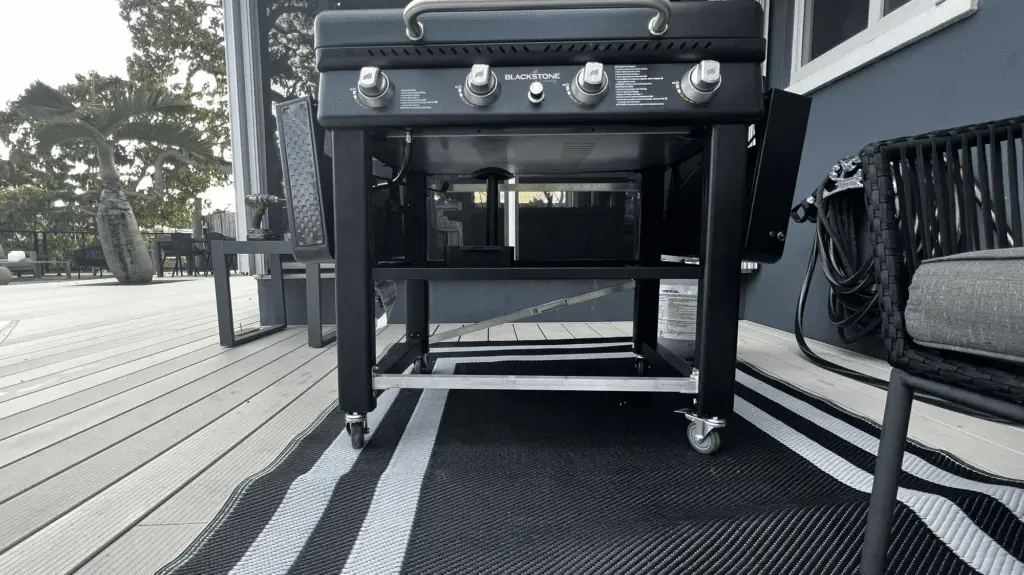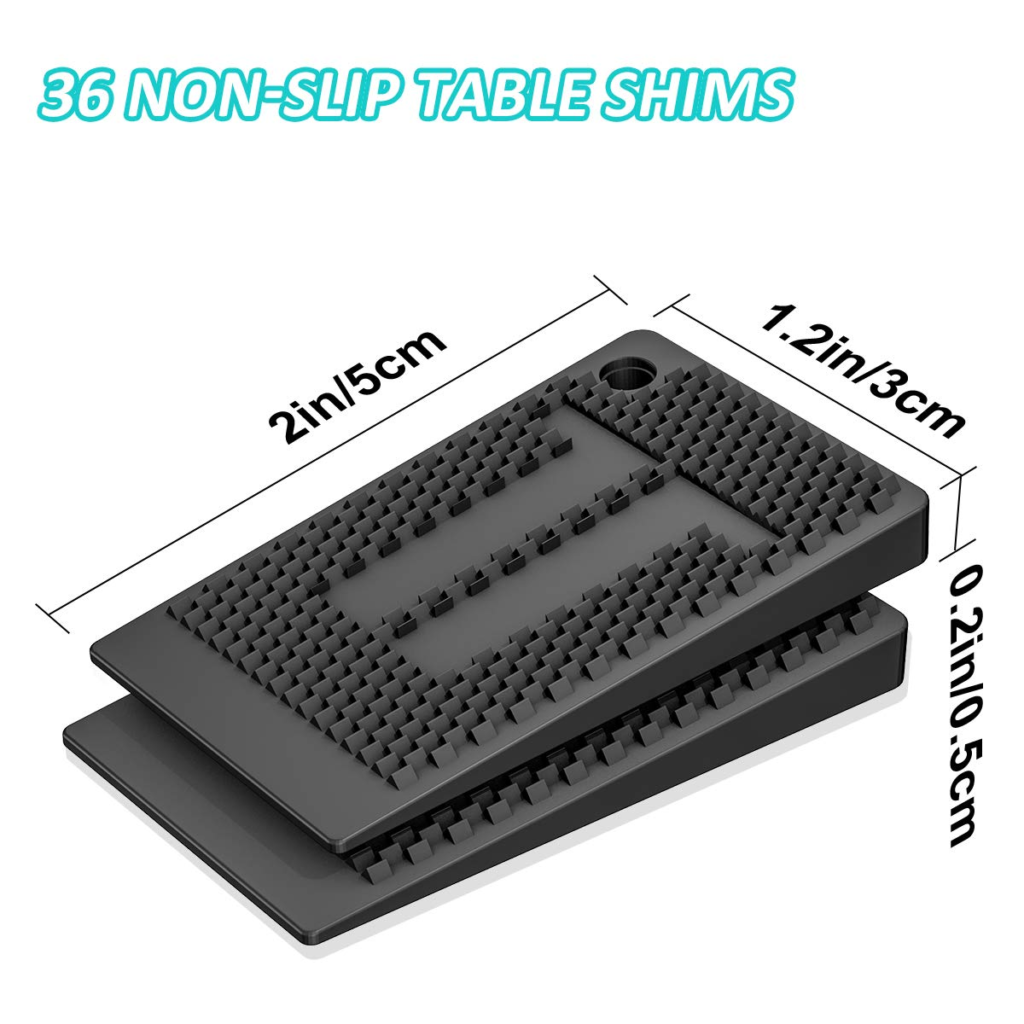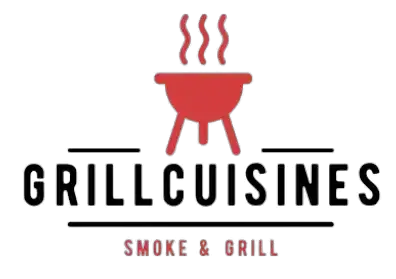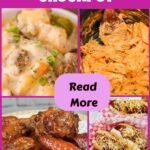Share via:
When it comes to grilling on a Blackstone griddle, one frustrating issue that many of us encounter is uneven heating.
Picture this: you’re all set to cook up a delicious meal, but you notice that certain areas of the griddle are hotter or colder than others.

This problem can make it challenging to get consistent cooking results and we may end up getting overcooked or undercooked food.
Blackstone uneven heating can be caused by many factors like irregular distribution of the burner flame, and accumulation of grease and debris, which can block the burner ports and disrupt the flow of heat. Uneven seasoning or coating or misaligned griddle surface can also affect heat distribution.
In this grillcuisines.com guide, I’ll cover:
- Causes of Blackstone Griddle Uneven Heat.
- Effects of Uneven Heating on Cooking Experience.
- Solutions and Tips for Even Heating on a Blackstone Griddle.
- And much more!
You might also find our guide on 15 common Blackstone problems and their solutions quite helpful and informative.
Causes Of Blackstone Uneven Heating
It is important to address the issue of the Blackstone griddle’s uneven heat for consistent cooking times and results.
When Blackstone not heating evenly, some portions of the food may become overcooked while others remain undercooked. This causes frustration and disappointment!
When we are cooking multiple foods simultaneously on a griddle uneven heat distribution can make it difficult to achieve the desired doneness for each item. This can affect meal preparation and timing, causing inconvenience and potentially affecting the overall dining experience.
1- Uneven Burner Flame Distribution
The primary cause of uneven heat on a Blackstone griddle is uneven burner flame distribution. This problem occurs when the flames produced by the burners are not evenly distributed across the griddle surface, leading to different levels of heat in different areas.
Possible Causes
a. Blockages in the burner ports
The very first reason for uneven burner flame is burner blockages. Dirt, grease, or debris can obstruct the flow of gas through the burner ports. This can result in an uneven flame distribution and subsequently uneven heat on the griddle.
b. Uneven gas pressure
In some cases, uneven gas pressure from the gas source can cause uneven burner flame distribution. This can happen due to issues with the gas regulator or an inadequate gas supply.
c. Burner alignment:
Improper alignment of the burners can also lead to uneven flame distribution. If the burners are not correctly positioned or if they are bent or damaged, they may produce flames that are not evenly spread across the griddle surface.
Solutions and troubleshooting tips
a. Check and clean burner ports
Inspect the burner ports for any blockages or debris. Clean them using a small brush or a paper clip to ensure a clear path for the gas flow. This will help promote even flame distribution.
Related > > How to Clean Gas Grill Burners Tube (5 Easy Steps)
b. Check the gas pressure
Check that the gas pressure from the source is consistent and adequate. If you suspect issues with the gas regulator or supply, consult a professional for inspection and potential adjustments.
Related > > How to Reset Blackstone Regulator (6- Steps)
c. Adjust burner alignment
If you notice uneven flame distribution, check the alignment of the burners. Ensure they are correctly positioned and securely attached. If any burners are damaged or bent, consider replacing them to achieve optimal flame distribution.
d. Perform regular maintenance
Regularly clean and maintain your griddle, including the burners, to prevent any blockages or obstructions. This will help ensure proper flame distribution and consistent heat.
e. Monitor heat zones
When cooking on a griddle with uneven burner flame distribution, it’s essential to be mindful of the hot and cool spots. Adjust your cooking techniques and food placement accordingly to compensate for the uneven heat. For example, you can move ingredients around or utilize different heat zones for specific foods.
2 – Grease buildup and blocked burner ports
Grease buildup and blocked burner ports are other common causes of uneven heat on a Blackstone griddle. Over time, grease can accumulate on the griddle surface and find its way into the burner ports, hindering the proper flow of gas and affecting flame distribution.
Potential causes
a. Grease accumulation on the griddle surface
During cooking, grease from food can accumulate on the griddle surface. If not regularly cleaned, this buildup can create uneven hot spots, obstruct the burner ports, and disrupt the flow of gas. As a result one side of Blackstone hotter than the other.
b. Grease dripping into burner ports
When cooking fatty foods or using excessive amounts of oil, grease can drip down into the burner ports. This can result in blockages that prevent the gas from flowing evenly through the burners.
Solutions
a. Regular surface cleaning
It is essential to clean the griddle surface after each use to prevent grease buildup. Use a scraper or spatula to remove any excess grease or food particles. Wipe the surface with a damp cloth or paper towel to ensure it is clean and free from debris.
You can follow these steps here to clean the Blackstone griddle after cooking.
b. Cleaning the burner ports
Adjusting the flame on your Blackstone griddle is essential for controlling cooking temperatures and achieving the desired heat level.
It is necessary to clean the burner ports regularly to remove any grease or blockages for consistent flame.
To clean burner ports make sure that the griddle is cool and the gas supply is turned off. Use a small brush, such as a toothbrush, to gently clean the ports. Be careful not to damage or distort the shape of the ports.
You can also use a mixture of warm, soapy water can be used for thorough cleaning if needed. Rinse with clean water and dry the ports before use.
3- Uneven Seasoning On Blackstone Surface

Uneven seasoning or coating on the griddle surface can also result in one side of Blackstone hotter than the other
Seasoning is the process of applying oil or fat to the griddle surface to create a non-stick coating and enhance its durability.
If the seasoning or coating is unevenly applied or has worn off with time in certain areas, it can affect the heat distribution on the griddle.
Areas with thin or no seasoning may heat up faster or differently than properly seasoned areas. Blackstone uneven seasoning can lead to uneven cooking, with some food items sticking or cooking unevenly across the griddle surface.
Related > > Is Blackstone griddle coating coming off? (Quick Fix)
Potential Causes:
a. Uneven Seasoning On Blackstone
During the initial seasoning or subsequent re-seasoning, if the oil or fat is not evenly distributed across the griddle surface, it can result in uneven coating thickness.
This can lead to inconsistent heat transfer, with some areas heating up faster or retaining heat differently than others.
b. Worn-off seasoning or coating
Over time and with use, the seasoning or coating on the griddle surface may wear off or become damaged.
As a result, certain areas of the griddle metal may heat up differently than the seasoned portions. And you may experience uneven heat distribution and variations in cooking experience across the griddle.
Related > > Is Blackstone griddle coating coming off? (Quick Fix)
Solution
Re seasoning or Re-coating the Blackstone griddle
You can reseason the griddle to address the issue of uneven seasoning or coating. By re-seasoning or re-coating the griddle, you can ensure a more uniform and durable coating, which promotes better heat distribution and improves the cooking experience.
It helps to minimize hot spots and cold zones, allowing for more consistent and reliable cooking results on your Blackstone griddle.
Follow these steps for re-seasoning or re-coating:
a. Cleaning the griddle:
Start by thoroughly cleaning the griddle surface to remove any residue, food particles, or remaining seasoning. Use a scraper or spatula to scrape off any excess buildup, and wipe the surface clean with a damp cloth or paper towel.
Ensure the griddle is completely dry before proceeding.
Related > > How to Clean Blackstone Griddle After Cooking (5- Steps)
b. Applying a thin layer of oil:
Using a high-smoke-point oil, such as vegetable oil or flaxseed oil, apply a thin, even layer of oil to the griddle surface.
Use a cloth or paper towel to spread the oil across the entire cooking surface, including the edges. Make sure to cover all areas, paying attention to any spots that may have been previously unevenly seasoned or coated.
Related > > 10 Best Oil For Blackstone Griddle (SMOKE POINT, FLAVOR, HEALTH BENEFIT)
c. Heating and seasoning process:
Turn on the griddle to medium-high heat and allow the oil to heat up. Let the oil remain on the griddle until it reaches its smoke point and starts to polymerize, creating a protective layer. This process helps to form a durable, non-stick coating. Afterward, turn off the griddle and let it cool down.
d. Repeat the seasoning process:
For best results, it is recommended to repeat the seasoning process multiple times. Each time you season the griddle, it helps to build up a stronger and more uniform coating. Follow the same steps of applying a thin layer of oil, heating, and cooling the griddle between each seasoning cycle.
4- Griddle Surface Alignment and Levelness

The alignment and level of the griddle surface play a crucial role in heat distribution. If the griddle surface is not properly aligned or level, it can result in uneven heat distribution and cooking.
A properly aligned and level griddle ensures efficient heat transfer from the burners to the cooking surface.
If the griddle surface is not level, it can create hot spots and cold zones. Food items placed over hot spots may cook faster or burn, while those over cold zones may take longer to cook.
Possible causes:
Some common causes for misalignment are:
a: Uneven ground or surface:
If the griddle is placed on an uneven or sloped surface, it can affect its alignment and levelness. The ground beneath the griddle may have bumps, dips, or unevenness, leading to an unstable cooking surface.
b. Improper assembly or installation:
During the assembly or installation process, if the griddle components are not aligned correctly or if the legs or feet are not adjusted properly, it can result in an unlevel cooking surface.
c- Wear and tear:
Over time, the griddle’s components may experience wear and tear, leading to misalignment. The legs or feet may become loose or damaged, causing the griddle to sit unevenly.
d- Transport or movement:
If the griddle has been moved or transported frequently, it can potentially cause misalignment. Vibrations, bumps, or rough handling during transportation can disrupt the level of the griddle.
e- Environmental factors:
Extreme weather conditions or exposure to moisture, heat, or cold can affect the stability and alignment of the griddle surface. Rusting or corrosion of certain parts can also contribute to misalignment.
Solutions:
Leveling a Blackstone griddle is essential for even cooking and to prevent oil or food from pooling in one area. Here’s how to level it:
a. How to level a Blackstone Griddle
Bubble Level: Level the Blackstone griddle by placing a spirit bubble level on different areas of the griddle surface, including the corners and center. If the bubble consistently remains in the center, the griddle is level.
Water Test: If you pour a small amount of water onto the griddle surface you can identify the uneven areas. If the water accumulates in certain spots or flows to one side, it indicates an uneven surface.

b. Adjusting levelness:
Most griddles come with adjustable legs or feet that allow you to level the surface. Depending on your griddle model, you may need to adjust the feet individually to achieve a level cooking surface.
You can use washers, plastic shims, or pieces of cardboard for leveling. Shims are thin, wedge-shaped pieces placed under the legs or corners of the griddle to even out the surface.

Wrap Up: Blackstone Uneven Heating
In conclusion, achieving even heat distribution on your Blackstone griddle is important for the best cooking results. Blackstone griddle uneven heat can lead to inconsistent cooking and undesirable outcomes.
We can easily identify and address factors such as uneven burner flame distribution, grease buildup, uneven seasoning or coating, improper food placement, and surface misalignment.
Remember to regularly clean and maintain your griddle, adjust burner flames, re-season as needed, and level the surface for optimal heat distribution. With these measures, you’ll not experience this issue in the future.
I am a writer, editor, and publisher of Grillcuisines.com – an online blog dedicated to sharing grilling tips, accessories, and recipes to encourage more people to get outside and grill.
I’m off to find out the different types of grill foods, their seasons, and how to conduct outdoor cooking properly. I’ll also show you some of my grill-worthy cooking tools & accessories!


